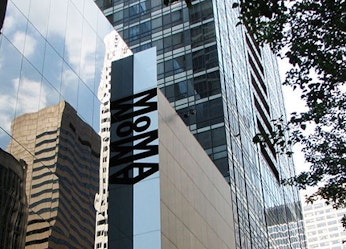

M|O Perspectives
Check back here for our thoughts on the latest developments in our industry.
Museums: The art of specialty asset analysis
Jun 15, 2022
Museums fall into one of Marx|Okubo’s specialty asset types: Arts, Culture & Entertainment. Inevitably, these classic monuments come with their own set of challenges. But it’s the creative problem-solving required by such challenges that we look forward to most in our reviews of museum properties.
When we assess spaces housing priceless collections, which may include elements of exhibition, storage, conservation, preservation, research, and study, our teams must address nuances ranging from climate requirements and visitor experience to the immediate and long-term needs of complex building systems.
Museum exhibits, for example, demand a continuously monitored environment that balances light, temperature, humidity, energy efficiency, and security, among other components. The 24/7 nature of a museum atmosphere means that equipment may fail prematurely due to heavy load, and there are limited opportunities to perform maintenance. In many cases, these buildings are their own massive pieces of architectural art. And in any public-facing space, preserving both the art and the environment that surrounds it is paramount.
Comprehensive solutions for museums
The physical expanse of museums brings innate challenges, but so, too, does curating and exhibiting these treasures. Balancing differing priorities from highly invested stakeholders, such as curators, conservationists, and building engineers, makes this type of work particularly sensitive.
“There must be universal buy-in to achieve progress. Communication among all stakeholders is critical, as is education about the condition assessment process,” says James La Terza, Assistant Vice President and PE in Marx|Okubo’s New York office. “Those closest to the art need to feel as heard as the staff responsible for maintaining equipment that preserves and protects the art.”
Many groups tend to take on museum work in silos, such as HVAC, acoustic or security. However, at Marx|Okubo we see museums as an integrated whole—more than the sum of its parts. Our services must reflect that, which is why we craft scalable teams that can analyze everything from the lobby entrance to the roof, looking holistically at the interplay between all building systems.
The intended outcome? To create a safe, stable environment to protect and preserve curated collections, satisfy diverse stakeholders’ concerns, and enhance experiences for both visitors and staff.
A holistic approach and expert analysis
During this meticulous work, we may be engaged to review specific systems, evaluate and manage repairs, and develop capital plans and priorities. Often initial analysis leads to recommendations in other areas, such as fire protection and life safety.
This is especially critical as cultural institutions are all too aware of recent losses such as the catastrophic fire at Rio’s 200-year-old Museu Nacional, which housed Egyptian artifacts, Greco-Roman art and some of Brazil’s first fossils.
Our work with MoMA in Manhattan is an excellent example. One of our most important priorities was to help the museum evolve from a reactive model to a proactive approach to maintenance and repairs. Following a detailed facilities condition assessment at this popular urban attraction, Marx|Okubo also recommended developing a protection plan based on NFPA 909, "Protection of Cultural Resource Properties.”
“Museums are built to local building code requirements; however, these requirements are in place for the life safety of the occupants and to protect the structural integrity of the building,” says Steve Schneider, PE and Senior Associate, Fire Protection/Life Safety. “Going through an NFPA 909 analysis allows stakeholders to choose how they want to approach risk.” Evaluating possible loss scenarios helps organizations determine the best path forward. “Our goal is to help stakeholders make informed decisions on risk and understand accountability of future losses,” says Schneider.
MoMA: Inside our museum work nationwide
We’ve been excited to take on museum work from New York to San Francisco and beyond. Our engagements with these institutions are as specialized as the collections these buildings house. But being able to provide full-service teams has only led to more—and more meaningful—collaboration in this growing discipline.
One recent example is our team’s WUFI analysis at SFMOMA. We looked at dynamic simulations of coupled heat and moisture transfer to confirm that humidity levels within fourth-floor galleries in the original Mario Botta-designed building was not a result of the exterior walls lacking a vapor barrier.
Working collaboratively with the building engineers, we uncovered that a mechanical item rather than a wall assembly issue was at fault. Upon evaluating hot and cold maps, we found that existing variable air volume (VAV) units were not performing to specifications—experiencing “drift”—with some unit airflow values off by as much as 200 cfm. This investigation allowed SFMOMA to prioritize the MEP systems and prepare new work orders to identify and remediate faulty units.
These are just a couple of examples of our work in museums—a specialty as rewarding as it is challenging. In many ways, providing comprehensive services in this area is an art form unto itself.
If you have any questions about museum-related services—or overall arts, culture and entertainment environments—please contact James La Terza.


What we do.
- Owner's Representation
- Property Condition Assessment
- Project Management
- Constructability Reviews
- Repair | Reconstruction
- Facility Condition Assessment
- Construction Loan Monitoring
- Accessibility
- Building Enclosure
- Fire | Life Safety
- Mechanical | Electrical | Plumbing
- Sustainability & Resilience
- Structural Engineering
- ASAP® - Automated Structure Alert Program
Marx|Okubo is a national architecture/engineering/construction consulting firm that works with real estate owners, investors and lenders—at every point of the property lifecycle—to evaluate their building projects, solve complex challenges and implement tailored solutions. We help clients understand their projects’ complexities, so they can make more informed decisions and, ultimately, mitigate their risk.




